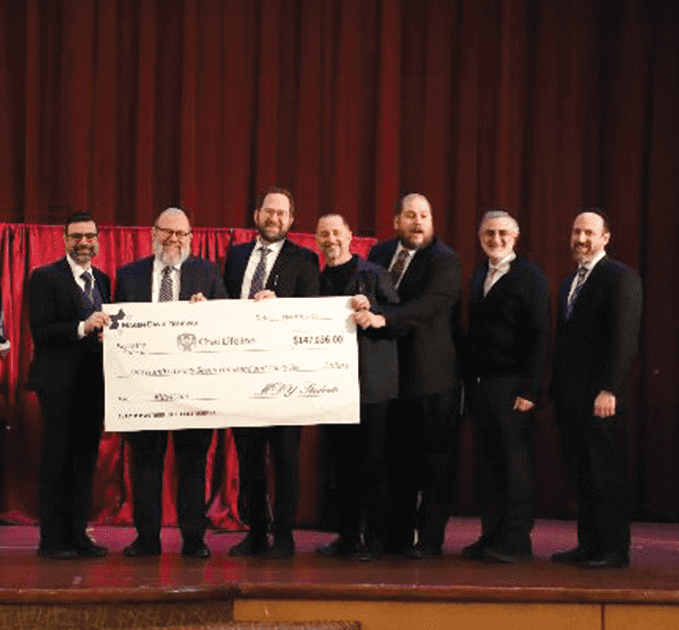The day that was to have been one of the most joyous days of all time suddenly turned tragic.
Following the sin of the golden calf, our ancestors spent months constructing the Mishkan, the sanctuary that would accompany them throughout their years of travel in the wilderness, and would ultimately be replaced by the permanent Bet Hamikdash. Gd had promised that if they donated the materials needed for this special structure, and they built it precisely according to His specifications, then the Shechinah – Gd’s presence – would reside among them. Despite the grievous sin of the golden calf, Gd was prepared to not only pardon them, but to fully restore their relationship, to the point where His presence would reside in their midst, represented by the Mishkan.
After months of eager anticipation, the day finally arrived. As we read this month in Parashat Shemini, Gd instructed that the Mishkan should begin functioning on the first of Nissan. On that day, Aharon and his sons served in the Mishkan as kohanim for the very first time, offering special sacrifices to mark this occasion. When the service was completed, a fire descended and consumed the sacrifices – a display of the Shechinah’s arrival among the people.
This moment of indescribable euphoria was then followed by heartbreaking tragedy.
“It Shall be Glorified by My Honor”
Aharon’s two older sons, Nadav and Avihu, brought an incense offering which they were not authorized to bring, and Gd immediately killed them by fire. The day of joy and celebration instantly became a day of mourning and grief.
The Gemara presents additional information regarding this incident, with various sages attributing to Nadav and Avihu other misdeeds, such as acting disrespectfully toward Moshe and Aharon, drinking wine before entering the Mishkan, and refusing to marry. In this context, though, I prefer to focus not on the nature of their sin, but rather on Moshe’s initial response.
Immediately after the tragedy, Moshe turned to his brother, Aharon, and said, “This is what Gd had spoken, saying: I shall be glorified by My sacred ones, and I shall be honored in the presence of the entire nation” (Vayikra 10:3). This verse is vague, and subject to different interpretations among the commentators. Rashi explains that Moshe referred to Gd’s pronouncement after completing His presentation of the commands concerning the Mishkan: “I shall commune there with Beneh Yisrael, and it shall be glorified by My honor” (Shemot 29:43). The word “bichvodi” (“by My honor”), Rashi writes, should be read as “bimechubadai” – “by My honored ones,” referring to the righteous members of the nation.” Already then, Gd informed Moshe that Gd would be “glorified” through the death of His “honored ones,” of especially righteous people. Nadav and Avihu were the righteous individuals who, for reasons we cannot know, were chosen for this purpose, to have their lives taken to bring glory to Gd.
Of course, this requires further explanation. How exactly was Gd glorified through the untimely death of Aharon’s two righteous sons? And why was this tragedy necessary?
The Doctor’s First Patient b
The Maggid of Duvna (Rav Yaakov Krantz, 1741-1804) explained this concept by way of an analogy.
He told the story of a king who ordered his subjects to erect a magnificent city, that would serve as a source of pride and glory to the entire kingdom. He opened his treasuries for the sake of this project, committed as he was to produce a city that would draw the attention and esteem of nations throughout the world. When the project was completed, he commanded the people to bring to the city the world’s leading professionals. He demanded that the cutting edge of every field be represented in this spectacular city. The greatest artisans, builders, designers, manufacturers, artists, scholars, writers and practitioners of every field were found and brought to live in the city, turning it into the pride and joy of the kingdom.
Naturally, the king also demanded that the world’s greatest physicians be brought. His advisors thoroughly researched and identified the most knowledgeable and experienced doctor on planet earth, and he was given a large home in the city. The king wanted the inhabitants of his new special city to receive only the very best that the medical field had to offer, and so he happily funded the greatest doctor on earth. The doctor arrived in his new home amid great excitement and fanfare.
Not long after he moved into town, he was summoned to treat his first patient – a frail, elderly man. The man fell critically ill, and the family frantically brought the doctor to treat him. The family members, and the entire city, were confident that their doctor, with his reputation for excellence, would cure the ailing octogenarian.
The renowned physician briefly examined the man, and knew right away that he would not survive. Nevertheless, he left the room and announced to the crowd that had assembled, “Fear not! This man will be cured!” The crowd jubilantly cheered, and felt immense pride and exhilaration that they had with them such an outstanding medical expert.
Unfortunately, however, shortly thereafter, the patient died. The townspeople were dumbfounded, and terribly disappointed. They felt that they had been deceived, that the physician did not live up to his reputation.
The news reached the king, who had spared no effort and no expense to find the greatest physician on earth and bring him to his special city. The king summoned the king and angrily demanded an explanation.
“Your Majesty,” the wise doctor began, “it is not for naught that my first patient in this new city died. When I arrived here, I sensed the townspeople’s excitement, and this frightened me. I was concerned that having a top-of-the-line doctor would cause widespread laxity. People would not care for their health, and would expose themselves to danger, because they would feel confident that no matter what illness they develop or injury they sustain, it could be cured. Of course, even the greatest doctors can’t cure everything. People need to take care of their health even if they have the best doctors available. And so I decided to disappoint the people, to promise them I could heal this first patient when I knew I couldn’t – so they would realize that I am limited, and will thus not rely on me to cure all their ills. I wanted them to understand that they still need to take care of themselves.”
Taking Responsibility for Our Spiritual Health
By the same token, the Maggid of Duvna explains, Gd made a point of harshly punishing two righteous men for a relatively minor infraction right on the first day of the Mishkan’s operation.
The construction of the Mishkan may be likened to the arrival of the world’s leading doctor. The Mishkan had the ability to “cure,” to bring atonement for the people’s misdeeds. However, as in the case of the doctor, the access to this source of atonement could, potentially, cause the people’s downfall. They might allow themselves to act as they please, to disregard the Torah’s laws feeling confident that the Mishkan would atone for anything they do wrong. And so right at the outset, Gd showed the people that they needed to take personal responsibility for their spiritual “health,” that the Mishkan’s atonement went only so far. Just as the finest doctors cannot help somebody who neglects his physical health, the Bet Hamikdash will not cleanse the souls of those who do not work to keep their souls pure.
The Maggid’s insight brings the tragic story of Nadav and Avihu very close to home, and makes it very relevant to us.
Although we still pray and long for the rebuilding of the Bet Hamikdash, we are truly blessed to have something very similar to the Bet Hamikdash – a beautiful and thriving religious community. We have many wonderful synagogues, schools, yeshivot and adult education programs, and a full range of organizations that enable us to live a rich Torah life. Like our ancestors at Sinai, who generously donated materials and worked laboriously to build the Mishkan, our community has, for made decades, been blessed with righteous donors and volunteers who selflessly and tirelessly exerted and exert themselves to produce the extraordinary “Mishkan,” our beloved religious institutions, which we all are and must be extremely proud of.
But the story of Nadav and Avihu warns us that this great blessing also poses the risk of complacency. When we look at the vast Torah infrastructure that has been built, we might be tempted to rest on our laurels, to rely too much on our communal institutions, such that we absolve ourselves of responsibility. We might feel that our children’s schooling is enough, so we do not need to educate them at home. We might feel that participating in the prayers and synagogue activities is enough, so we can be lax the rest of the time. We might feel that having rabbis and scholars whom we support excuses us from the need to learn and to grow spiritually.
As important as our religious institutions are, we still need to put in the work. Judaism is a “do-it-yourself” religion. Of course, we need rabbis, scholars, educators, and institutions. But these are valuable to us only if we make a personal effort to learn, grow, and perform. As the Maggid of Duvna teaches us – just like no doctor can save a patient who does not take care of himself, no rabbi, synagogue, or yeshiva will help us if we do not invest time and work into our spiritual wellbeing.
We should all be proud of the beautiful community that we have worked together to build. Let us take full advantage of this precious gift by assuming personal responsibility for our and our families’ spiritual growth, so we can bring the Shechinah into our midst and develop a close relationship with our Creator.












